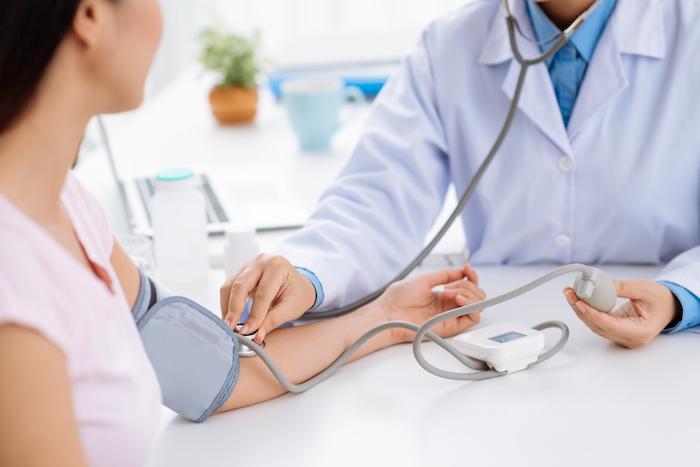Last Updated on June 6, 2025 2:52 pm by INDIAN AWAAZ

Prof. Dr. Anil Sharma, Professor & Head Department of Cardiology, Bombay Hospital
High blood pressure, or hypertension, is often called the “silent killer”—and for good reason. Most people don’t even know they have it until it leads to serious health problems. Left unmanaged, it can quietly damage your arteries and organs, increasing the risk of heart attack, stroke, kidney failure, vision loss, and even sexual dysfunction.
According to global health data, conditions linked to high blood pressure—ischemic heart disease and stroke—are among the top causes of death worldwide. In India alone, hypertension affects nearly 30% of adults, with urban areas showing a prevalence of 33.8% and rural areas around 26.6%. Clearly, this isn’t just a health issue—it’s a national concern.
A Brief History of Measuring Blood Pressure
Our understanding of hypertension goes back centuries. In the 1700s, Stephen Hales pioneered methods to measure blood pressure using a water column. Later, Scipione Riva-Rocci invented the sphygmomanometer, the inflatable cuff used even today. The familiar “Korotkoff sounds” (those beats your doctor listens for) were discovered in 1905. Over time, the equipment and techniques have improved—but the importance of accurate measurement remains unchanged.
Getting Accurate Readings: Why It Matters
Proper technique is essential when measuring blood pressure. Small mistakes—like using the wrong cuff size, measuring after activity, or ignoring arm differences—can lead to incorrect diagnosis or treatment. In fact, measuring both arms during the first visit can reveal differences that may point to underlying vascular issues.
Doctors classify four types of blood pressure patterns:
- True Hypertension (47%): High BP both in clinic and at home
- White Coat Hypertension (27%): High in clinic but normal at home
- Masked Hypertension (8%): Normal in clinic but high at home
- Normotensive (17%): Normal in both settings
Ambulatory or home monitoring is especially valuable for patients with obesity, diabetes, kidney issues, or erratic readings.
When to Start Medication—and When Not To
Not everyone with slightly elevated blood pressure needs pills right away. If your systolic pressure is between 120-129 mmHg and diastolic between 80-89 mmHg, doctors often recommend lifestyle changes first—unless you have other risk factors like heart disease or diabetes.
The ACC/AHA 2018 guidelines provide a useful framework, but treatment still needs to be personalized. For instance, the SPRINT trial showed benefits of aggressive BP control but also highlighted potential risks like kidney injury or electrolyte imbalance.
For most patients, the target blood pressure is below 130/80 mmHg. A slightly higher target may be acceptable in low-risk individuals or for primary prevention. In cases of stroke, tighter control is usually necessary.
Lifestyle Modifications: The First Line of Defense
Before reaching for a prescription, start with changes that are proven to lower blood pressure:
- Lose excess weight – Every 1 kg lost = 1 mmHg BP drop
- Limit salt intake
- Exercise regularly – even brisk walking counts
- Reduce alcohol and quit smoking
- Eat heart-healthy foods like fruits, vegetables, nuts, and whole grains
Even for those on medication, these habits can improve outcomes and reduce the number of drugs needed.
Medications: One Size Doesn’t Fit All
When lifestyle changes aren’t enough, medications are introduced based on the severity of hypertension and the patient’s overall health. Common drug classes include:
- Diuretics
- Beta-blockers
- ACE inhibitors or ARBs
- Calcium channel blockers
- Combination pills
The choice depends on individual needs. For example, beta-blockers are preferred in heart failure, while ACE inhibitors or ARBs are used for those with chronic kidney disease—especially if there’s proteinuria. During pregnancy, drugs like labetalol, methyldopa, or hydralazine are safer options, while ACE inhibitors must be avoided.
In cases of acute stroke, careful BP lowering is critical, and in intracerebral hemorrhage, too rapid a drop can worsen outcomes.
Secondary Hypertension: Know the Signs
While most high BP cases are “primary” (without an obvious cause), some are “secondary,” linked to specific health problems. Clues that point to secondary hypertension include:
- Onset before age 30
- Sudden or resistant BP rise
- Symptoms like muscle weakness, heat/cold intolerance, or cool limbs
These cases require specialist evaluation and targeted treatment.
Adherence: The Most Overlooked Factor
Even the best treatment won’t work if patients don’t follow it. Improving adherence means:
- Checking for compliance at every visit
- Linking medications to daily routines
- Taking missed doses ASAP
- Using fixed-dose combination pills to reduce pill burden
- Simplifying regimens
- Considering specialist referrals when BP remains uncontrolled
Final Word: One Step at a Time
High blood pressure may be silent—but its effects are anything but. Fortunately, modern science, smart monitoring, and simple lifestyle changes give us powerful tools to fight it. Whether it’s by eating better, staying active, or finding the right medication, managing hypertension isn’t just possible—it’s essential for a longer, healthier life.
